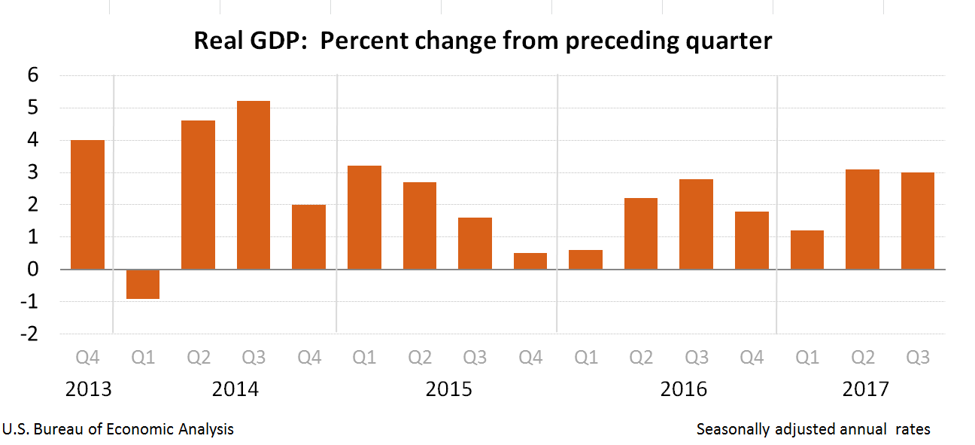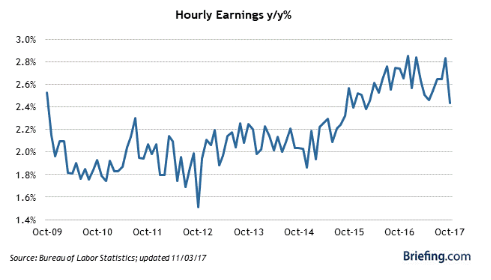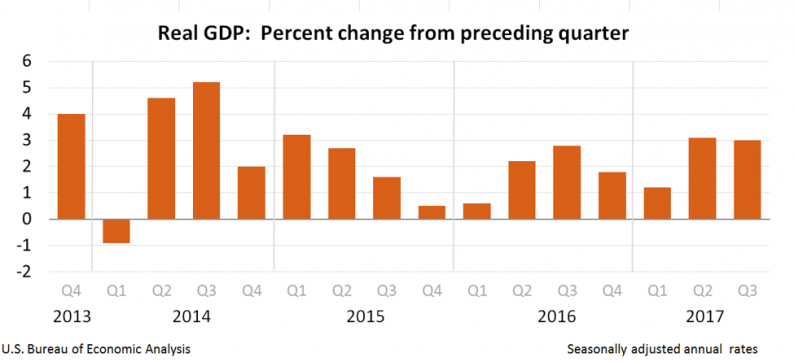The U.S. economy has very strong momentum behind it as it enters the 2017 holiday spending season. U.S. real GDP increased at a 3% annual rate in the third quarter of 2017, industrial production rose 1.6% y/y in September, and the CPI inflation rate was 2% in October.
Total nonfarm payroll employment increased by a hefty 261,000 in October from only 18,000 in September, as the impact from Hurricanes Irma and Harvey has clearly reversed itself with respect to the job market.
The unemployment rate edged down to 4.1% in October from September’s 4.2% and the annual increase in wages moderated to 2.4% from 2.8% in the previous month.
Since January, the U.S. unemployment rate has declined by 0.7 percentage points, and the number of unemployed persons has decreased by 1.1 million.
The October unemployment rate is significantly below the Fed’s assumed long–run equilibrium range of 4.5% to 4.8%.
In other words, the American economy seems close to full employment, and long-standing worries about price deflation have retreated. Nonetheless, there is still a problem around relating to the fact that real wage gains are extremely low.















Leave A Comment